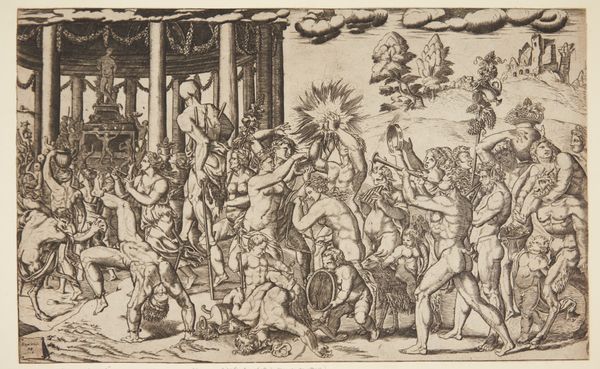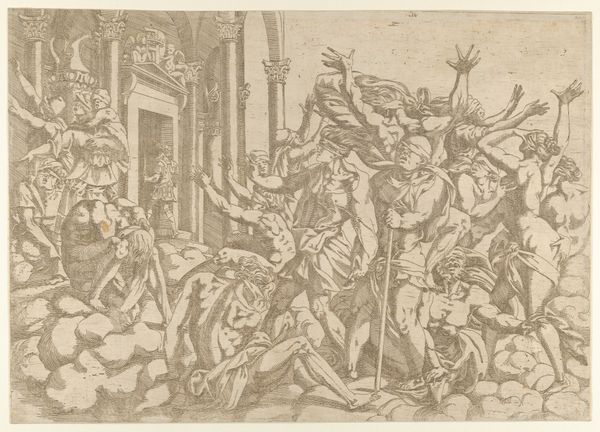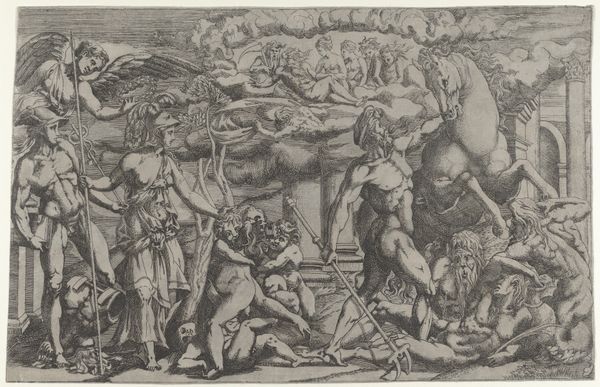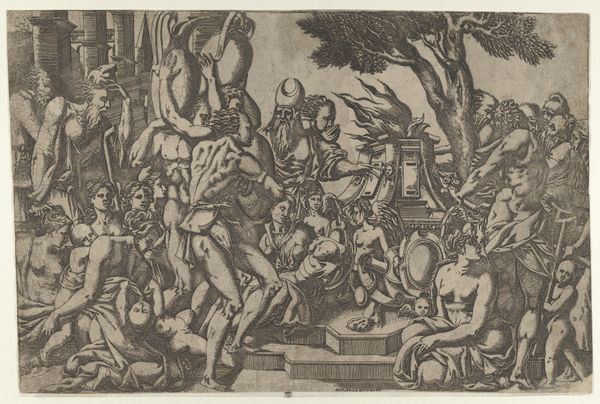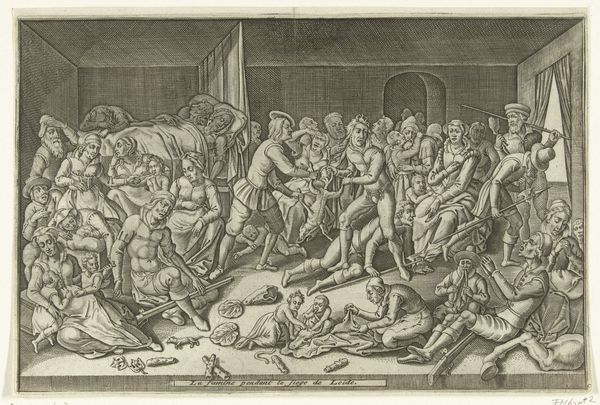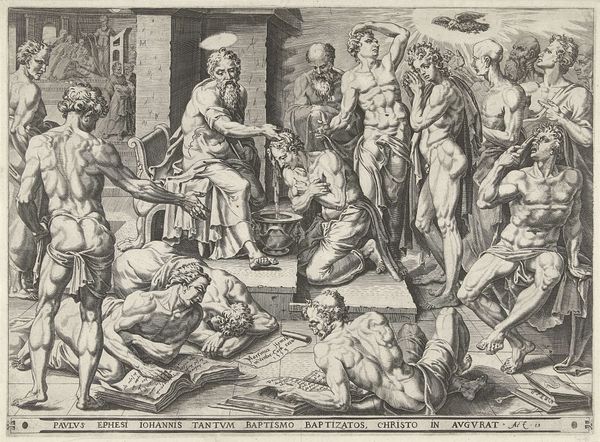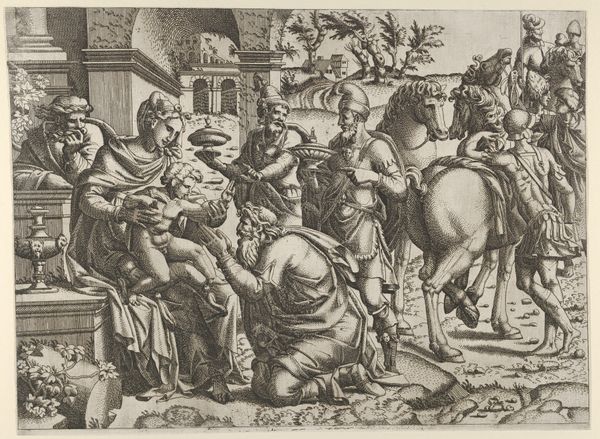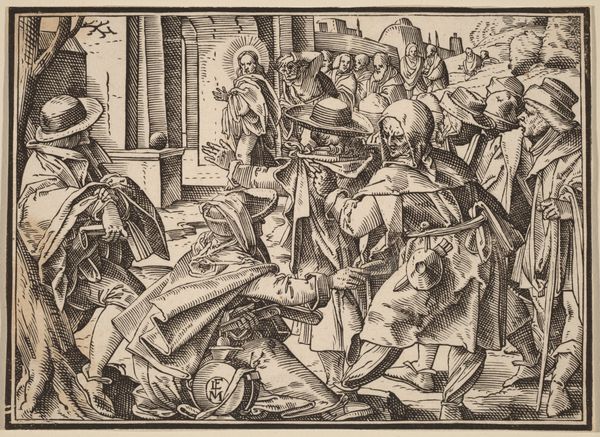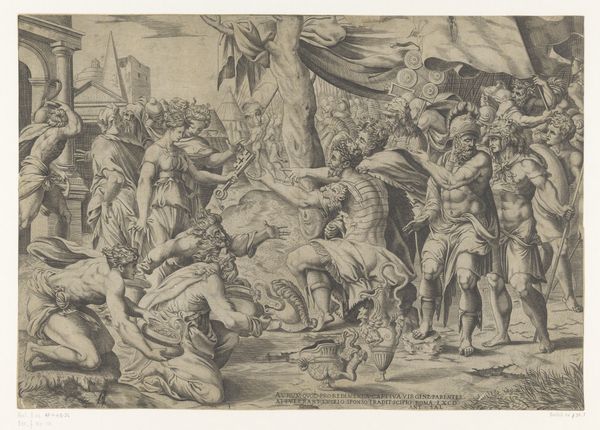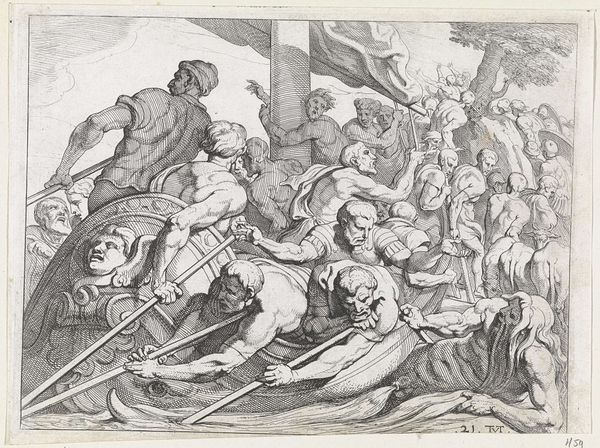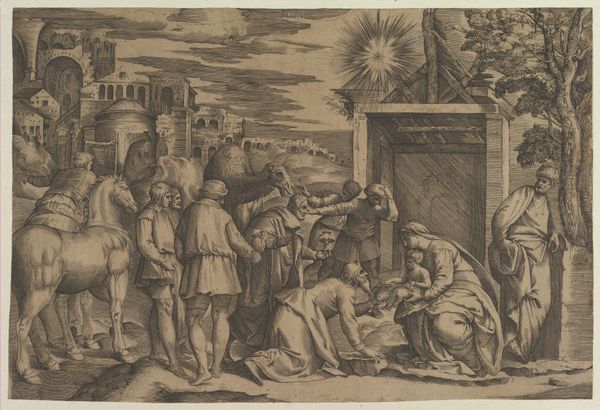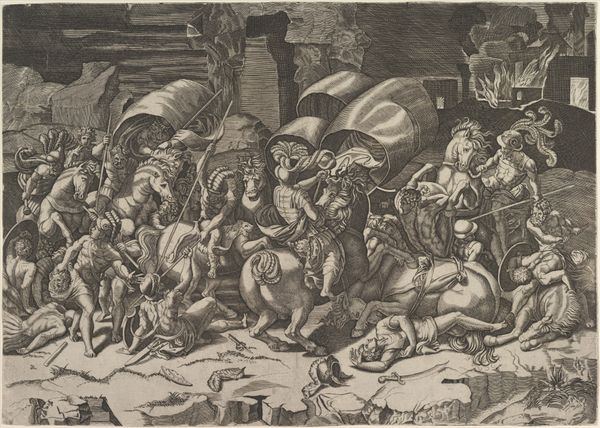
drawing, print, etching
#
drawing
#
narrative-art
# print
#
etching
#
figuration
#
history-painting
#
male-nude
Dimensions: Sheet: 10 1/2 x 16 in. (26.6 x 40.7 cm)
Copyright: Public Domain
Curator: Let's take a moment to examine Antonio Fantuzzi's "Burning of a Corpse," an etching made sometime between 1538 and 1548, currently residing at The Metropolitan Museum of Art. Editor: Well, the immediate feeling is one of chaos, a kind of horrifying disarray rendered in monochrome. The diagonals created by the figures lend a sense of drama, but it's the human form in extremis that really hits you. Curator: Indeed. Fantuzzi has carefully orchestrated the composition, haven't they? Note how the figures are arranged almost as in a frieze, with a foreground filled with fallen bodies leading to a central conflagration. The use of etching allows for incredible detail in depicting the human anatomy, particularly in the suffering figures. Observe, too, the architectural backdrop and how it establishes a classical setting. Editor: The burning itself seems almost symbolic. Fire, historically and psychologically, purges and transforms, doesn't it? What are we meant to understand by the act of destroying human remains with fire in such a brutal, public manner? Is it an indictment of a culture or specific moment in time? Curator: Such depictions, particularly in the Renaissance, were often rooted in classical narratives or served as allegories. Consider the way the artist delineates textures – the flames leap with convincing ferocity due to dense and layered line work. In semiotic terms, consider the bodies as 'signs'—signifiers of pain, death, and perhaps a deeper societal decay, positioned against more stoic onlookers who stand as silent 'signs' as well. Editor: You can almost feel the heat and the horror emanating from that pyre. Some of these onlookers in togas recall images of spectators from gladiator tournaments, with implied emotional coldness. One wonders whether Fantuzzi intentionally alluded to such brutal pastimes with the visual cue. Curator: Perhaps the artist offers a comment on power, judgment, and even sacrifice. The very lines communicate something – they articulate a complex message of destruction but also, dare I say, of visual dynamism? It's in the mastery of technique that meaning finds a space to breathe. Editor: Yes, Fantuzzi transforms an otherwise brutal event into a spectacle of sorts. An arresting depiction to be certain, with lasting reverberations throughout art history. Curator: Quite so. The etching method allows the work to retain visual intensity and depth. Its monochromatic values become symbolic, amplifying the dramatic message Fantuzzi encodes within the very structures of his artwork.
Comments
No comments
Be the first to comment and join the conversation on the ultimate creative platform.
